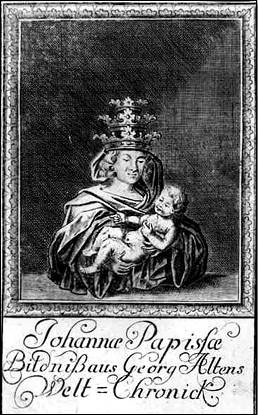 In a sad period of anarchy the Church received a strong leader
when John, archdeacon of the Roman clergy, was elected to succeed Hadrian II.
Although probably old and in failing health when elected, John's strong will
rose above age and ailments to make him a very active pope. From Constantinople
John received messages asking him to acknowledge Photius as patriarch. After the
death of St. Ignatius, Photius once more had been made patriarch. The Pope sent
legates to a synod held in 879- 880. Although Photius did tamper with papal
letters, he explained the matter to Pope John's satisfaction, and John not only
acknowledged Photius but approved the acts of this synod which wiped out the
synod of 869-870, the so-called Eighth Ecumenical Council.
In a sad period of anarchy the Church received a strong leader
when John, archdeacon of the Roman clergy, was elected to succeed Hadrian II.
Although probably old and in failing health when elected, John's strong will
rose above age and ailments to make him a very active pope. From Constantinople
John received messages asking him to acknowledge Photius as patriarch. After the
death of St. Ignatius, Photius once more had been made patriarch. The Pope sent
legates to a synod held in 879- 880. Although Photius did tamper with papal
letters, he explained the matter to Pope John's satisfaction, and John not only
acknowledged Photius but approved the acts of this synod which wiped out the
synod of 869-870, the so-called Eighth Ecumenical Council.
The Greeks acknowledged the Pope's primacy. Even more, they
restored Bulgaria to the Western Patriarchate. Emperor Basil cooperated with
Pope John in his efforts against the Saracens. Toward the Western Slavs John
also acted wisely. Germans with ambitions for political and religious domination
over Moravia resented the work of St. Methodius. When they actually made him a
prisoner, Pope John ordered that he be released. At the same time he forbade the
use of the Slavonic liturgy. After German complaints about the disloyalty of St.
Methodius kept coming in, John called Methodius to Rome. Convinced of the
loyalty and sanctity of the great apostle, the Pope sent him back with honor and
with permission to use the Slavonic liturgy again. John tried desperately to
keep the sinking Western Empire afloat. After the death of Louis II, he decided
that of all the claimants, Charles the Bald of France would make the best
emperor. He crowned Charles in 875 and encouraged the French emperor's attempt
to put new life into the empire. Charles in turn granted the Pope freedom of
papal elections and other favors. But Charles died in 877.
After a period of anxious searching, the Pope had to be content
with a shadow emperor, Charles the Fat. John struggled manfully against the
Saracens. He strained every nerve to unite the Italians against the common foe,
but sadly he had to rebuke some for even allying themselves with the Moslem. He
extended the fortifications of Rome. He built a fleet and defeated the Saracens
in a sea fight at Circe. Nor was Pope John less active against enemies at home.
German resentment at his coronation of Charles the Bald had led the duke of
Spoleto to chase him from Rome. But he came back determined to do his duty. He
struck a blow for decency by cleansing the city of a nest of corrupt officials
and evil nobles. Oddly enough, associated with the rascals was the austere
Formosus. Formosus, a focus of discontent, was banished. John died December 16,
882. A gruesome story is told of his death. According to one German annalist, a
relative of Pope John gave him poison, but sick and old though the Pope was, the
poison worked slowly. Impatient, the villain seized a hammer and beat the Pope
to death. But this story is not at all certain.
Excerpted from "Popes
Through the Ages" by Joseph Brusher, S.J.

